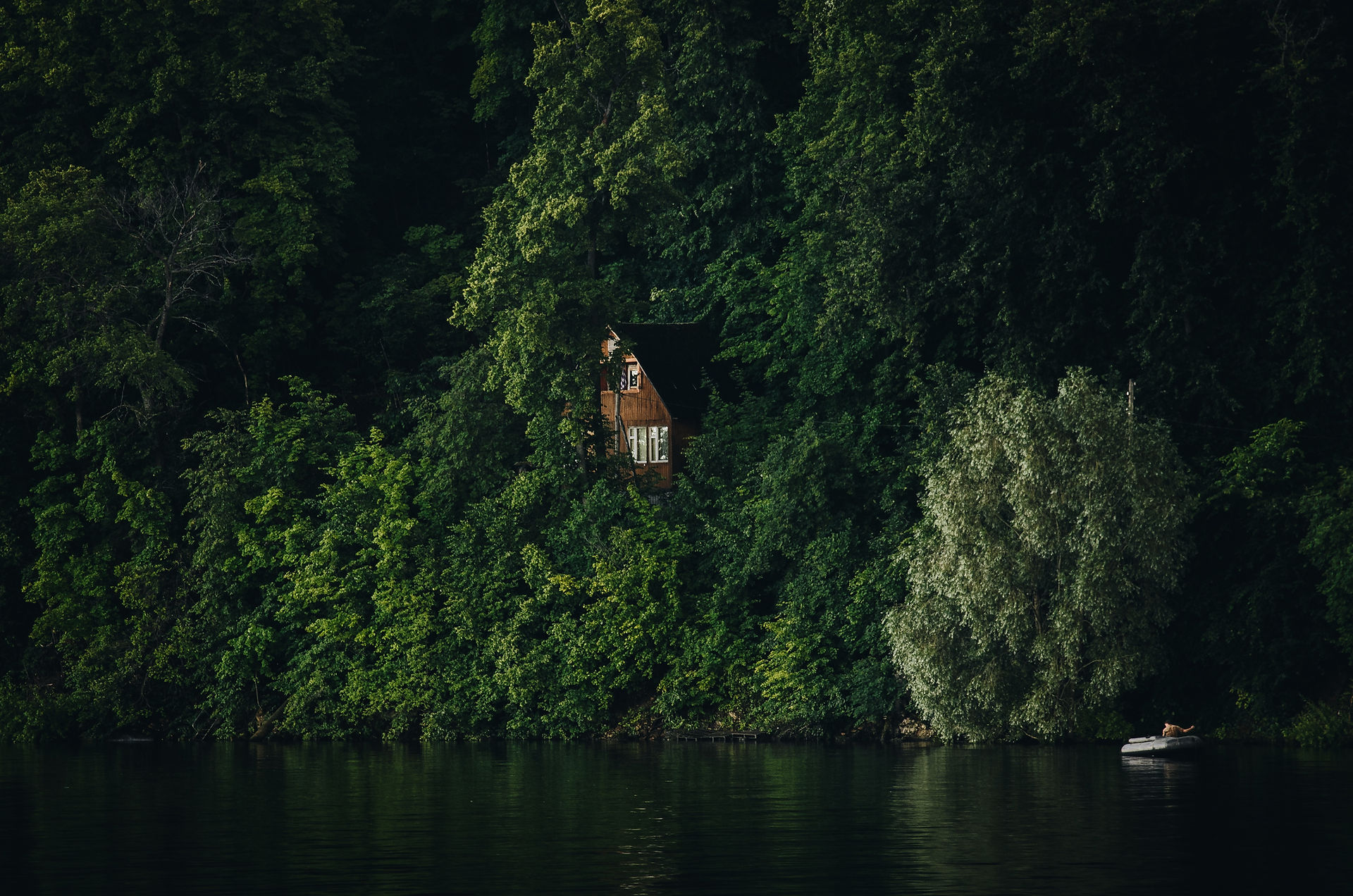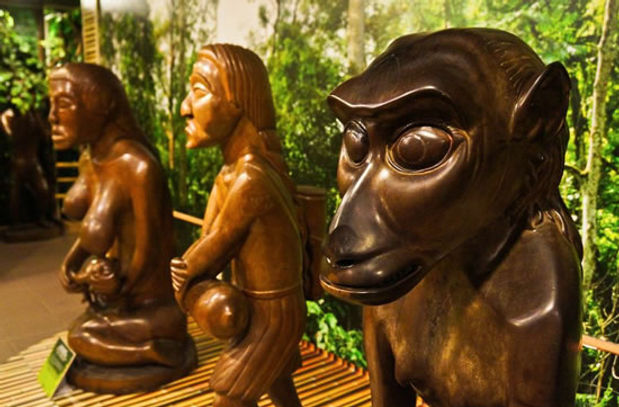

The entrance of the Muzium Seni Kraf Orang Asli, Orang Asli Craft Museum, Kula Lumpur.
Source: Department of Museums Malaysia
This museum is dedicated to the traditional arts of the Orang Asli of Peninsular Malaysia. Featured here are the wood carvings, which are related to the Orang Asli's ancient belief systems.
Source: Tourism Unit, Kuala Lumpur City Hall.
In this oral history interview with Mrs Tema binte Tok and Mr Paul Teo, they will share how Orang Aslis gather certain roots and herbs from jungle to sell for their medicinal value. They also talked about going on hunts for mousedeer and wild boar for food which were sometimes also sold for money.
Home & Living
The Orang Asli
Orang Asli which means "First people", "native people", "original people", "aborigines people" or "aboriginal people" in Malay, are the original inhabitants of Peninsular Malaysia; that is, they were already in the land before the arrival of the Malays. Despite this, they are a minority, making up about 0.6% of the population of Malaysia. A heterogeneous indigenous group of people, they consist of 18 ethnic groups and are divided into three distinct groupings: the Negrito, Senoi and Proto-Malay. The Temoq, Senoi and Negrito speak Aslian, which is part of the Austroasiatic language family, who have historical ties with the indigenous population of Indochina including Myanmar and Thailand. The Proto-Malay’s language on the other hand is similar to Malay, which is part of the Austronesian family of languages. Although 40% of Orang Asli live in or near the forest and are involved in agriculture, hunting and gathering. They forage from jungle resources and sell what they collect for money. Some Orang Asli also live in the coastal areas and fish and harvest seafood for a living. A few particularly Negritos lead semi-nomadic lifestyles and enjoy the seasonal harvest from the forest. A majority of the Orang Asli (about 70%) still stick to their animistic beliefs; while about 10% of them are Christians and between 15-20% of them are Muslims.

